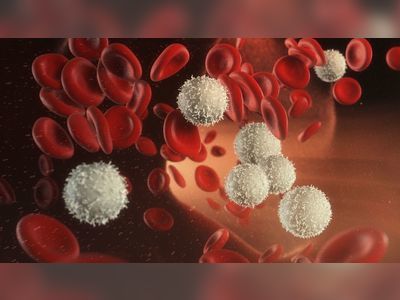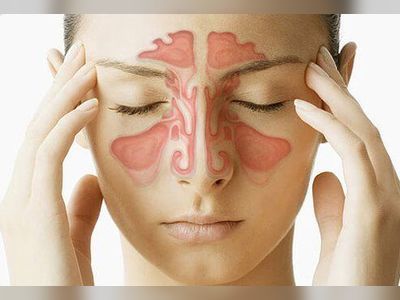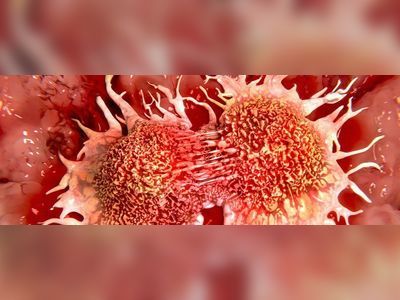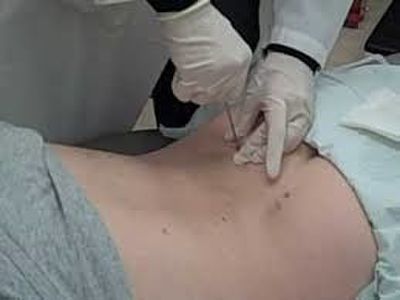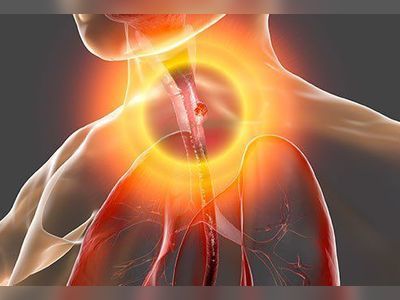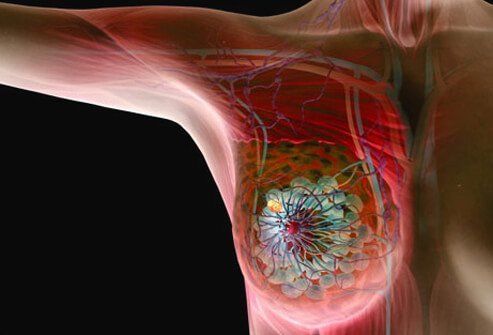
Breast Cancer Awareness: Symptoms, Diagnosis, and Treatment
Breast cancer may or may not cause symptoms. Some women may discover the problem themselves, while others may have the abnormality first detected on a screening exam. Common breast cancer symptoms, when they occur, include the following:
Non-painful lumps or masses
Lumps or swelling under the arms
Nipple skin changes or discharge
Noticeable flattening or indentation of the breast
Change in the nipple
Unusual discharge from the nipple
Changes in the feel, size, or shape of the breast tissue
Types of Breast Cancer
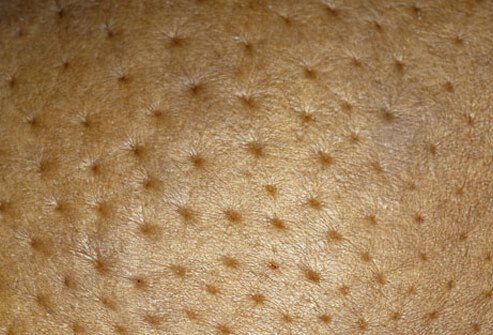
Inflammatory Breast Cancer
Inflammatory breast cancer is a rare type of cancer that often does not cause a breast lump or mass. As seen in this photo, it often causes thickening and pitting of the skin, like an orange peel. The affected breast may also be larger or firmer, tender, or itchy. A skin rash or reddening of the skin is common. These changes are caused by cancer cells blocking lymph vessels in the skin. Inflammatory cancer of the breast typically has a fast growth rate.
Invasive Ductal Carcinoma
Invasive (or infiltrating) ductal carcinoma (IDC) is the most common type of breast cancer. About 80% of all breast cancers are invasive ductal carcinomas. Invasive ductal carcinoma refers to cancer that has broken through the wall of the milk ducts and has invaded the breast tissues. Invasive ductal carcinoma can spread to the lymph nodes and possibly to other areas of the body.
Ductal Carcinoma in Situ (DCIS)
Ductal carcinoma in situ (DCIS) is considered to be a non-invasive or pre-invasive breast cancer. Ductal means that the cancer starts inside the milk ducts, carcinoma refers to any cancer that starts in the skin or other tissue (including breast tissue) that line or cover the internal organs, and in situ means "in its original place." The difference between DCIS and invasive cancer is that in DCIS, the cells have not spread through the walls of the milk ducts into the surrounding breast tissue. DCIS is considered a 'pre-cancer', but some cases can transform into more invasive cancers.
Invasive Lobular Carcinoma
Invasive (or infiltrating) lobular carcinoma (ILC) is the second most common type of breast cancer after invasive ductal carcinoma. Lobular means that the cancer started in the milk-producing lobules, which empty out into the ducts that carry milk to the nipple. Invasive lobular carcinoma refers to cancer that has broken through the wall of the lobule and begun to invade the breast tissues. Invasive lobular carcinoma can spread to the lymph nodes and possibly to other areas of the body.
Mucinous Carcinoma
Mucinous (or colloid) carcinoma of the breast is a rare form of invasive ductal carcinoma. In this type of cancer, the tumor is composed of abnormal cells that "float" in pools of mucin, part of the slimy, slippery substance known as mucus. Mucus lines most of the inner surface of our bodies, such as our digestive tract, lungs, liver, and other vital organs. Breast cancer cells can produce some mucus. In mucinous carcinoma, mucin becomes part of the tumor and surrounds the breast cancer cells.
"Pure" mucinous carcinomas make up only 2-3% of invasive breast cancers. Approximately 5% of invasive breast cancer tumors have a mix of mucinous components in addition to other types of breast cancer cells.
Triple-Negative Breast Cancers
Testing negative for estrogen receptors (ER-), progesterone receptors (PR-), and HER2 (HER2-) on a pathology report means the cancer is "triple-negative". These negative results indicate the growth of the cancer is not supported by the hormones estrogen and progesterone, nor by the presence of too many HER2 receptors. Therefore, triple-negative breast cancer does not respond to hormonal therapy (such as tamoxifen or aromatase inhibitors) or therapies that target HER2 receptors, such as Herceptin. However, other medicines can be used to treat triple-negative breast cancer.
Paget's Disease of the Nipple
Paget's disease of the nipple is a rare form of breast cancer in which cancer cells collect in or around the nipple. The cancer usually affects the ducts of the nipple first then spreads to the nipple surface and the areola. A scaly, red, itchy, and irritated nipple and areola are signs of Paget's disease of the nipple. One theory for the cause of Paget's disease is that the cancer cells start growing inside the milk ducts within the breast and then break through to the nipple surface. Another possibility is that the cells of the nipple itself become cancerous.
Causes of Breast Cancer
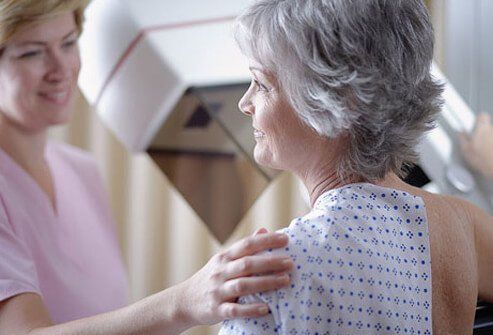
Certain genes control the life cycle-the growth, function, division, and death-of a cell. When these genes are damaged, the balance between normal cell growth and death is lost. Normal breast cells become cancerous because of changes in DNA structure. Breast cancer is caused by cellular DNA damage that leads to out-of-control cell growth.
Causes of Breast Cancer: Genetics & Mutations
Inherited genes can increase the likelihood of breast cancer. For example, mutations of genes BRCA1 and BRCA2 (linked to an increased risk of breast and ovarian cancers) can inhibit the body's ability to safeguard and repair DNA. Copies of these mutated genes can be passed on genetically to future generations, leading to a genetically-inherited increased risk of cancer.
Causes of Breast Cancer: Lifestyle
Lifestyle choices can lead to breast cancer as well. Eating a poor diet, inactivity, obesity, heavy alcohol use, tobacco use including smoking, and exposure to chemicals and toxins are all associated with a greater breast cancer risk.
Causes of Breast Cancer: Medical Treatment
Medical treatment with chemotherapy, radiation, or immunosuppressive drugs used to decrease the spread of cancer throughout the body can also cause damage to healthy cells. Some "second cancers," completely separate from the initial cancer, have been known to occur following aggressive cancer treatments. Radiation theraspy to the chest to treat other conditions or cancers also increases the risk of developing breast cancer.
Mammograms and Breast Cancer Prevention
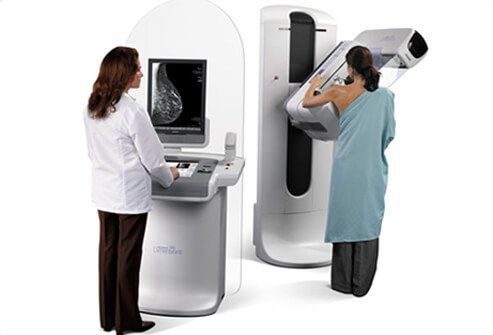
Early detection of breast cancer is the key to survival. Mammograms are X-rays of the breast that can detect tumors at a very early stage, before they would be felt or noticed otherwise. During a mammogram, your breasts are compressed between two firm surfaces to spread out the breast tissue. Then an X-ray captures black-and-white images of your breasts that are displayed on a computer screen and examined by a doctor who looks for signs of cancer. 3D mammograms, or breast tomosynthesis, is a breast imaging procedure that also uses X-rays to produce images of breast tissue in order to detect abnormalities.
Breast Cancer Prevention: Breast MRI and Ultrasound
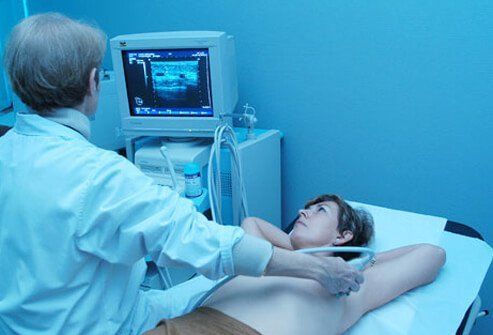
Breast MRI
MRI (magnetic resonance imaging) is a technology that uses magnets and radio waves to create detailed, 3D images of the breast tissue. Before the test you may be injected with a contrast solution (dye) through an intravenous line in the arm. The contrast solution will allow potential cancerous breast tissue to show more clearly. Radiologists are able to see areas that could be cancerous because the contrast tends to be more concentrated in areas of cancer growth.
During a breast MRI the breasts are exposed as the patient lies flat on a padded platform with cushioned openings for the breasts. A breast coil surrounds each opening and works with the MRI unit to create the images. MRI imaging is a painless diagnostic tool. The test takes between 30 and 45 minutes.
Ultrasound
Sometimes a breast ultrasound is ordered in addition to a mammogram. An ultrasound can demonstrate fluid-filled cysts that are not cancerous. Ultrasounds may also be recommended for routine screening tests in some women at a higher risk of developing breast cancer. During a breast ultrasound a small amount of water-soluble gel is applied to the skin over the area to be examined. Then, a probe is gently applied against the skin. You may be asked to hold your breath, briefly several times. The breast ultrasound takes about 10 minutes to complete.
Breast Cancer Prevention: Breast Self-Exams

Experts recommend that women be aware of their breasts and notice any changes, rather than performing checks on a regular schedule. Women who choose to do self-exams should be sure to discuss the technique with their doctor.
What is a Breast Self-Exam?
A breast self-exam is a way to check your breasts for changes such as lumps or thickenings. Early breast cancer detection can improve your chances of surviving the disease. Any unusual changes discovered during the breast self-exam should be reported to your doctor.
Lump in Breast: Could it be Cancer?
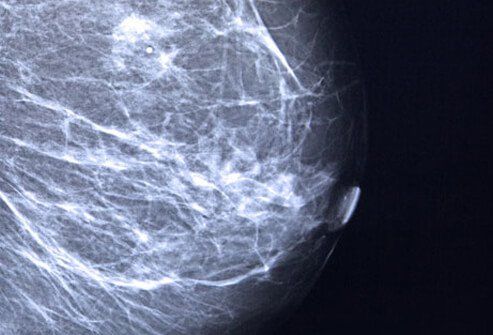
Remember that the majority (about 80%) of breast lumps are not due to cancer. Cysts, benign tumors, or changes in consistency due to the menstrual cycle can all cause benign breast lumps. Still, it's important to let your doctor know about any lumps or changes in your breast that you find.
Breast Cancer Biopsy

A biopsy is the most certain way to determine whether a breast lump is cancerous. Biopsies may be taken through a needle or through a minor surgical procedure. The results can also determine the type of breast cancer that is present in many cases (there are several different types of breast cancers). Treatments are tailored to the specific type of breast cancer that is present.
Needle Biopsies
A needle biopsy uses a hollow needle to remove tissue or cell samples from the breast. A pathologist studies the samples under a microscope to see if they contain cancer. There are two types of needle biopsies: core need biopsy and fine needle aspiration (fine needle biopsy).
Core Needle Biopsy
If a lump can be felt in the breast (palpable mass), a core needle biopsy may be performed. The doctor will use a small amount of local anesthetic to numb the skin and the breast tissue around the area. The doctor will insert the needle and remove a small amount of tissue to be examined.
Ultrasound-Guided Core Needle Biopsy
This is one type of biopsy for lumps or abnormalities that cannot be felt (nonpalpable mass). A core needle is placed into the breast tissue and ultrasound helps confirm the exact location of the potential cancer so the needle is placed correctly. Tissue samples are then taken through the needle. Ultrasound can see the difference between cysts and solid lesions.
MRI-Guided Core Needle Biopsy
For this test, you will be given a contrast agent through an IV. Your breast will be numbed and compressed and several MRI images will be taken. The MRI images will guide the doctor to the suspicious area. A needle will be used in the biopsy device to remove tissue samples with a vacuum assisted probe.
Stereotactic Biopsy
If the lump is nonpalpable you could be also given a stereotactic biopsy. Using a local anesthetic, the radiologist makes a small opening in the skin. A needle is placed into the breast tissue, and imaging studies help confirm the exact placement. Tissue samples are taken through the needle.
Surgical Biopsies
A surgeon makes a cut (incision) in the breast to remove tissue.
Open Excisional Biopsy
This surgery removes an entire lump and the issue is examined under a microscope. If a section of normal breast tissue is taken all the way around a lump, it is called a lumpectomy. In this procedure, a wire is put through a needle into the area to be biopsied. The X-ray helps to make sure it is in the right location and a small hook at the end of the wire keeps it in position. The surgeon uses the wire as a guide to locate the suspicious tissue.
Incisional Biopsy
An incisional biopsy is very similar to an excisional biopsy, but less tissue is removed. Local anesthetic will be used, and you will also get IV sedation. An incisional biopsy removes part of the tumor, which means that more surgery may be needed to remove the remaining cancer.
Biopsy Results: Hormone-Sensitive Breast Cancer
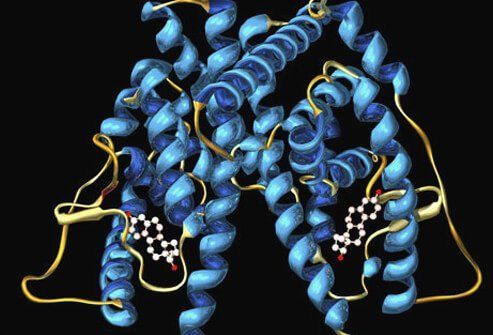
A biopsy can tell whether the breast cancer has receptors for estrogen (ER-positive) and/or progesterone (PR-positive), indicating which hormone stimulates tumor growth. About two-thirds of breast cancers are hormone receptor-positive. Medications can be given that act to help prevent growth of the tumor from stimulation by these hormones.
ER-positive breast cancer is sensitive to estrogen, whereas PR-positive breast cancer is sensitive to progesterone. Both ER-positive and PR-positive breast cancers may respond to hormone therapy. Hormone receptor (HR) negative is a type of cancer that does not have hormone receptors and will not be affected by hormone blocking treatments.
Biopsy Results: HER2-Positive Breast Cancer
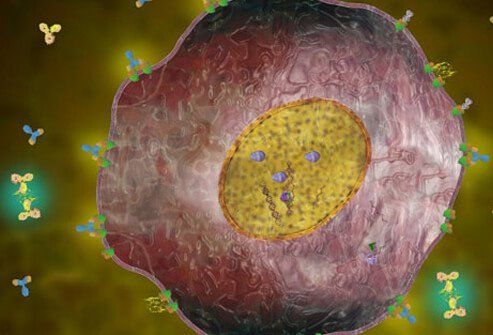
HER-2 (human epidermal growth factor receptor 2) is a protein that is expressed at a high level by about 20% of breast cancers. Having this receptor means the cancer tends to grow and spread faster than other forms of breast cancer. However, there are special targeted treatments available for this type of tumor.
Treatments specifically for HER2-positve breast cancer include:
Herceptin (trastuzumab)
Kadcyla (ado-trastuzumab emtansine)
Perjeta (pertuzumab)
Tykerb (lapatinib)
Breast Cancer Stages
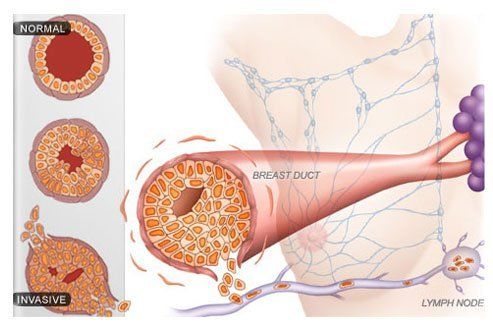
Breast cancer stages are classified according to cancer tumor size, location, and extent of spread. Staging helps doctors determine the prognosis and treatment for cancer. The TNM staging system classifies breast cancers according to the following criteria:
Tumor (T): Primary tumor size and/or extent
Nodes (N): Spread of cancer to lymph nodes in the regional area of the primary tumor
Metastasis (M): Spread of cancer to distant sites away from the primary tumor
Breast Cancer Survival Rates

Breast cancer survival depends upon a number of factors. Cancers that are found early are often localized to the breast. Statistics on the survival rate of breast cancer are often given as 5-year survival rates. The 5-year survival rate is the percentage of people who live at least 5 years after being diagnosed with breast cancer. According to the American Cancer Society, women with early stage (stage 1) breast cancer have a 5-year survival rate of 100%. Women with breast cancer that has spread to distant sites in the body (stage 4) have only a 22% chance of surviving 5 years; but this rate can improve as treatment advances are made.
Breast Cancer Treatments: Surgery
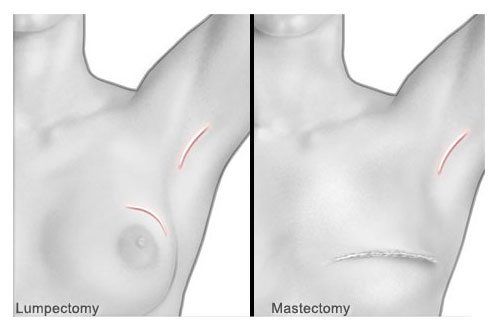
Breast-conserving surgery removes the cancer and some healthy tissue around it, but not the breast. Some lymph nodes under the arms may be removed for biopsy. If the cancer is near the chest wall, part of it may be removed. Breast-conserving surgery is also known as breast-sparing surgery, lumpectomy, partial mastectomy, quadrantectomy, and segmental mastectomy.
Mastectomy
Mastectomy is the removal of the entire breast and all the surrounding tissue and possibly nearby tissues. There are different mastectomy surgeries available, depending on how much additional tissue is removed.
Breast Cancer Treatments: Radiation Therapy
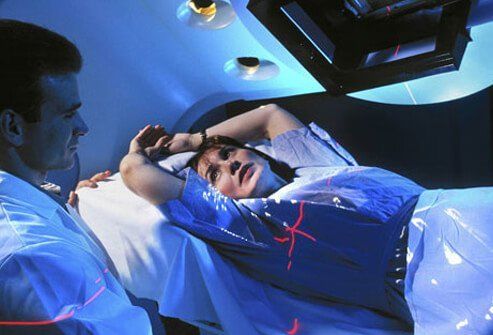
High-energy beams of localized radiation are used to kill targeted cancer cells. Radiation therapy can be used after breast cancer surgery, or it may be used in addition to chemotherapy for widespread cancer. This treatment does have side effects, which can include swelling of the area, tiredness, or a sunburn-like effect. There are two ways to administer radiation therapy.
External Beam Radiation
A beam of radiation is focused onto the affected area by an external machine. The treatment is usually given five days a week for five to six weeks.
Brachytherapy
This form of radiation involves radioactive seeds or pellets that are implanted into the breast next to the cancer.
Breast Cancer Treatments: Chemotherapy
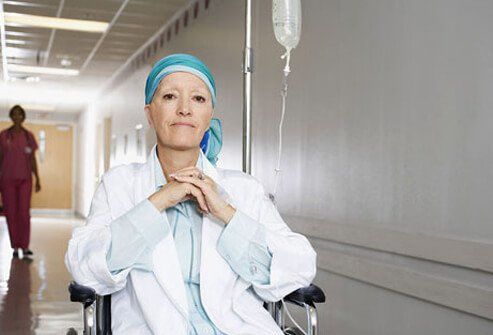
Chemotherapy drugs are given to kill cancer cells that are located anywhere in the body. It can be administered by a slow IV infusion, by pill, or by a brief IV injection, depending upon the drug. Sometimes chemotherapy is given after surgery to help prevent the cancer from recurring (adjuvant therapy). Side effects of chemotherapy can include an increased risk of infection, nausea, fatigue, and hair loss.
Adjuvant Chemotherapy
If all visible cancer has been removed, there is still the possibility that cancer cells have broken off or are left behind. Adjunct chemotherapy is given to assure that these small amounts of cells are killed. Since some women have a very low risk of recurrence even without chemotherapy, it is not given in all cases.
Neoadjuvant Chemotherapy
Neoadjuvant chemotherapy is given before surgery. There is no correlation between neoadjuvant chemotherapy and long-term survival, but there are advantages to see if the cancer responds to the chemotherapy before surgical removal. This can also reduce the size of the cancer and allow for a less extensive surgery in some patients.
Chemotherapy for Advanced Breast Cancer
Chemotherapy can be used if the cancer has metastasized to distant sites in the body. In this case, doctors will determine the most appropriate treatment.
Chemotherapy Side Effects
Different drugs cause different side effects. Certain types of chemotherapy have specific side effects, but each patient's experience is different. The following are common side effects of chemotherapy:
Fatigue
Pain (headaches, muscle pain, stomach pain, and pain from nerve damage)
Mouth and throat sores
Diarrhea
Nausea and vomiting
Constipation
Blood disorders
Changes in thinking and memory
Sexual and reproductive issues
Appetite loss
Hair loss
Permanent damage to the heart, lung, liver, kidneys, or reproductive system
Breast Cancer - Hormone Therapy

Some breast cancer cells are activated by female hormones estrogen and/or progesterone (ER- and PR-positive breast cancers). Hormone therapy can stop or slow the growth of hormone receptor-positive tumors by blocking the cancer cells from receiving the hormones they need to grow. Hormone therapy is usually given after surgery, but it can also be given to reduce the chance of developing breast cancer in women at high risk.
Targeted Drug Therapies for Breast Cancer
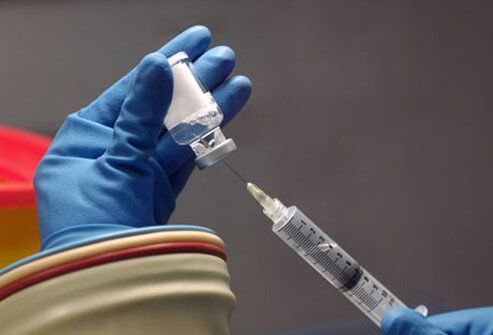
Targeted therapies are newer treatments for breast cancer patients. They utilize specific proteins within cancer cells, like the HER-2 protein. Targeted therapies can stop the HER-2 protein from stimulating tumor growth in cancer cells that have this protein. Targeted therapies have fewer side effects than traditional chemotherapy because they only target cancer cells. They are often used in combination with chemotherapy.
Breast Cancer Recovery
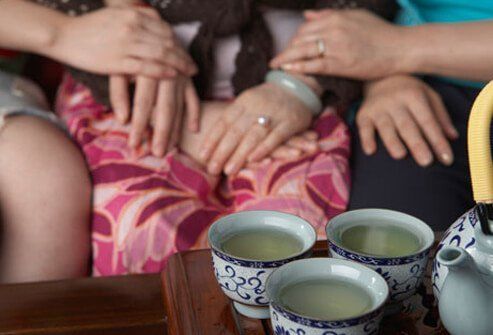
Breast cancer treatment can be both physically and emotionally exhausting. There are many changes taking place that may be difficult to cope with. "Chemobrain" is a term coined to describe the mental changes caused by chemotherapy treatment. Patients have experienced memory deficits and the inability to focus. Breast cancer treatments can also leave patients fatigued, which is normal.
It can be difficult to keep up with activities of daily life, and make patients feel isolated or overwhelmed. Friends and family can be invaluable sources of support and assistance during this time. Some people choose to join a local or an online support group to share their experiences and spread breast cancer awareness.
Breast Reconstructive Surgery
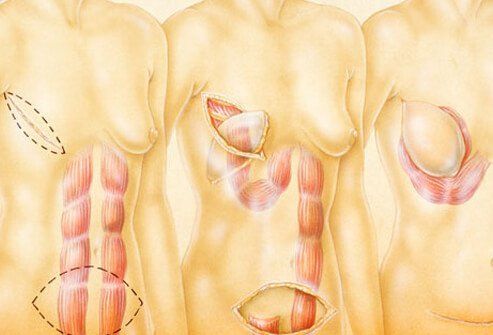
Many women opt to have reconstructive surgery after breast cancer surgery. Reconstructive procedures use implants or tissues obtained from other locations in the body. These procedures can be done at the time of mastectomy, or they may be performed months or even years later.
Implants
A tissue expander will be inserted un the skin, for a few weeks, to stretch the skin and allow a silicone-gel or saline implant to be inserted. Each week preceding the implant insertion, the tissue expander is filled to a desired volume until the patient is satisfied with their new breast size.
Tissue Flap Procedure
A woman's own tissue is taken from the abdomen or back to create a mound to reconstruct the breast. The tissue is sometimes kept attached to its original blood supply or it is disconnected and reconnected to a blood supply near the new location. Some patients also have nipple reconstruction, which is created using tissue from the back or abdomen flap. The nipple is then tattooed in order to resemble the color of a nipple. A prosthetic nipple is also an option and can be created by making a copy of your natural nipple.
Alternative to Reconstructive Surgery: Prosthesis

A prosthesis, or breast form, is an alternative to reconstructive surgery. A prosthesis offers the appearance of breasts without surgery. This is a device that is worn inside a bra or bathing suit to permit a balanced appearance when clothed. Breast prostheses come in many shapes, sizes, and materials (silicone gel, foam, or fiberfill interior). Breast prosthetic devices are often covered by insurance plans.
Is Breast Cancer Genetic?

Breast cancer occurs in both men and women, but it is about 100 times more likely to affect women than men. Women over age 55 and those with a close relative who have had the condition are at greatest risk for developing breast cancer. Still, up to 80% of women who do get breast cancer do not have a relative with the disease. Certain inherited genetic mutations dramatically increase a women's risk of breast cancer. The most common of these are genes known as BRCA1 and BRCA2. Women who inherit mutations in these genes have up to an 80% chance of developing breast cancer.
The Breast Cancer (BRCA) Gene Test
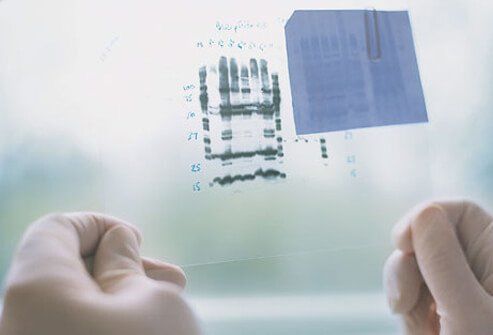
Several tests are available to look for the Breast Cancer (BRCA) gene. A blood test can be given to analyze DNA mutations in BRCA1 and BRCA2. Women who have inherited mutations have a much higher risk of developing breast cancer. The BRCA test is typically only offered to people who may have inherited the mutation. You may be a candidate for the BRCA gene test if you have the following:
Personal history of breast cancer
Personal history of ovarian cancer
Family history of breast cancer in parents, siblings, and/or children
A male relative with breast cancer
A family member with both breast and ovarian cancers
A family member with bilateral breast cancer
Two or more relatives with ovarian cancer
A relative with known BRCA1 or BRCA2 mutation
Ashkenazi Jewish ancestry with a close relative with breast or ovarian cancer
Ashkenazi Jewish ancestry and a personal history of ovarian cancer
Breast Cancer Prevention

Factors that can raise the risk of getting breast cancer include not getting enough exercise, drinking more than one alcoholic drink per day, and being overweight. Breast cancer prevention also includes avoiding exposure to carcinogens, chemicals, and radiation from medical imaging. Some kinds of hormone therapy and birth control pills can also elevate risk, but the risk returns to normal after stopping these medications. Some studies have shown that regular physical activity may help lower the risk of recurrence in women who have survived breast cancer.
Preventative surgery (prophylactic mastectomy) may also prevent breast cancer. Bilateral prophylactic mastectomy is the removal of both breasts in order to prevent breast cancer. Women with a strong family history and BRCA1 or BRCA2 mutations may choose to have bilateral prophylactic mastectomy in order to lower their risk of developing breast cancer.
Breast Cancer Research
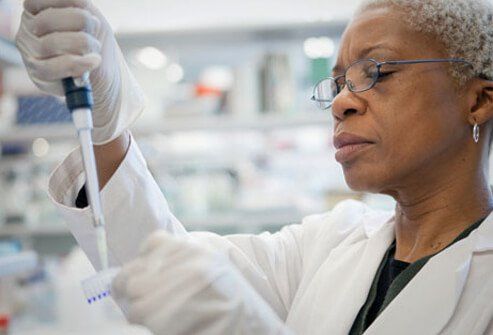
Doctors continue to search for more effective and tolerable treatments for breast cancer. The funding for this research comes from many sources, including advocacy groups throughout the country. Many breast cancer survivors and their families choose to participate in walk-a-thons and other fundraising events. This links each individual fight against cancer into a common effort for progress.






